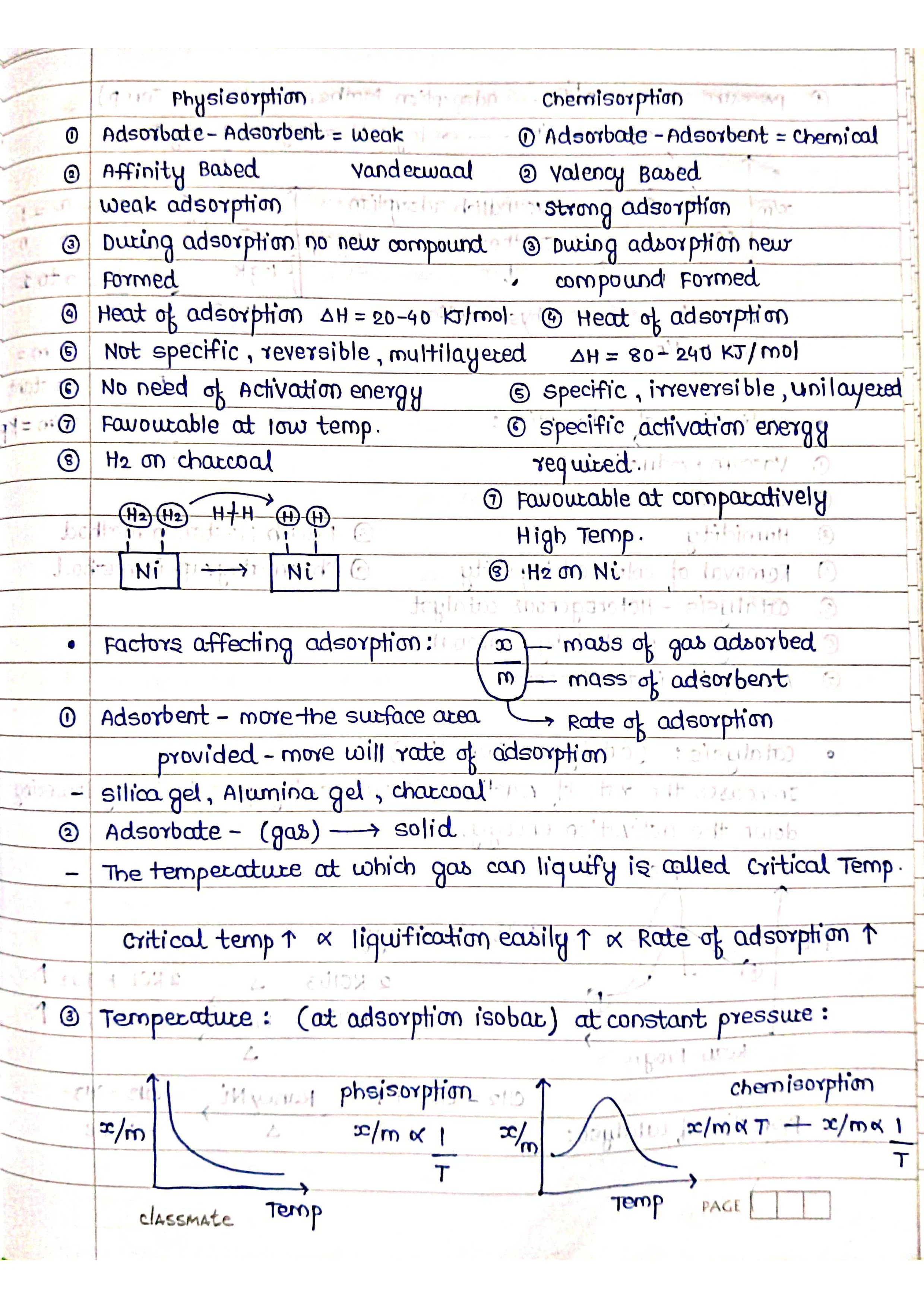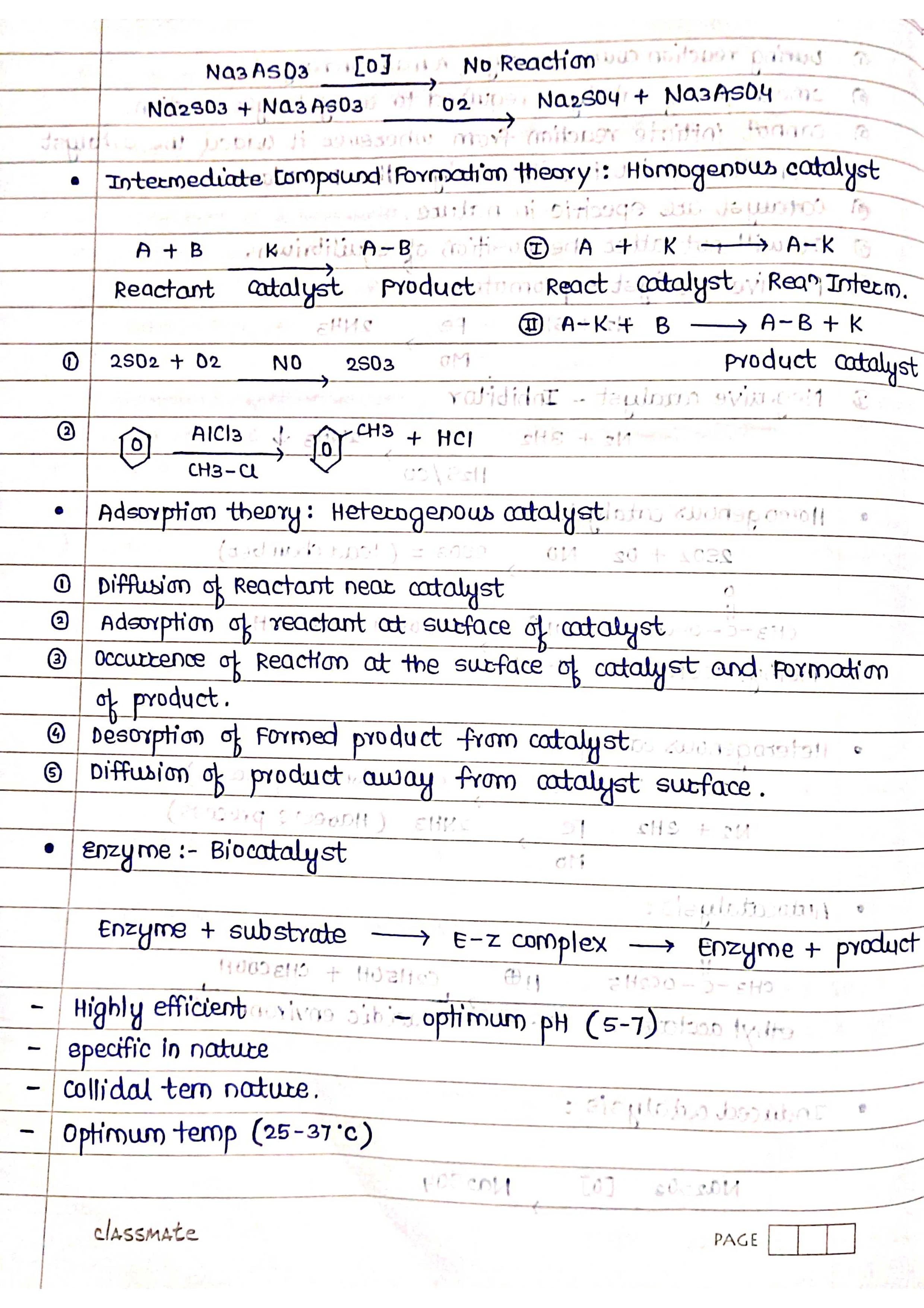Surface chemistry is the branch of chemistry that deals with the phenomena that occur on surfaces or interfaces, such as corrosion, catalysis, and crystallization.
Adsorption
Adsorption is the accumulation of molecular species at the surface of a solid or liquid due to unbalanced attraction forces. The adsorbed molecules are called adsorbates, and the material on which the adsorption takes place is called the adsorbent. Examples of adsorbents include charcoal, silica gel, and metals.
Important characteristics of adsorption:
➡️ Specific and selective in nature.
➡️ Spontaneous process with a decrease in free energy (ΔG).
➡️ Exothermic process, meaning it releases heat.
Desorption
Desorption is the process of removing an adsorbed substance from a surface.
Distinction between adsorption and absorption
Adsorption occurs on the surface of a material, while absorption occurs throughout the bulk of a material.
Sorption
Sorption is a term used when both adsorption and absorption occur simultaneously.
Positive and negative adsorption
Positive adsorption occurs when the concentration of the adsorbate is higher on the surface of the adsorbent than in the bulk. Negative adsorption occurs when the concentration of the adsorbate is lower on the surface of the adsorbent than in the bulk.
Factors affecting adsorption
➭ Nature of the adsorbent.
➭ Surface area of the adsorbent.
➭ Nature of the gas being adsorbed.
➭ Temperature.
➭ Pressure.
➭ Activation of the solid adsorbent.
Adsorption isotherms
Adsorption isotherms are plots of the amount of gas adsorbed per unit mass of adsorbent versus the equilibrium pressure at a constant temperature. There are two main types of adsorption isotherms: Freundlich and Langmuir isotherms.
Applications of adsorption
➭ Production of high vacuum.
➭ Gas masks.
➭ Humidity control.
➭ Removal of coloring matter from solutions.
➭ Catalysis.
➭ Separation of inert gases.
➭ Chromatography.
Catalysis
Catalysis is the process by which a substance called a catalyst can change the rate of a chemical reaction without being consumed itself. Catalysts can be positive or negative.
Types of catalysis
➭ Homogeneous catalysis: The catalyst and reactants are in the same phase.
➭ Heterogeneous catalysis: The catalyst and reactants are in different phases.
➭ Autocatalysis: One of the products of a reaction acts as a catalyst for the reaction.
Characteristics of catalysts
➭ Remain unchanged in mass and chemical composition.
➭ Do not affect the equilibrium composition of a reaction.
Adsorption theory of heterogeneous catalysis
The adsorption theory of heterogeneous catalysis involves five steps:
➭ Diffusion of reactants to the surface of the catalyst.
➭ Adsorption of reactant molecules on the surface of the catalyst.
➭ Chemical reaction on the catalyst's surface.
➭ Desorption of reaction products from the catalyst surface.
➭ Diffusion of reaction products away from the catalyst surface.
Important features of solid catalysts
➭ Activity: Depends on the strength of chemisorption.
➭ Selectivity: The ability to direct a reaction to a particular product.
➭ Shape-selective catalysis: Depends on the pore structure of the catalyst and the size of the reactant and product molecules.
Enzyme catalysis
Enzymes are biological catalysts that are made up of protein molecules. They are highly efficient and specific.
Characteristics of enzyme catalysis
➭ High efficiency.
➭ Highly specific nature.
➭ Optimum temperature and pH.
➭ Can be activated by ions and co-enzymes.
➭ Inhibited by inhibitors.










